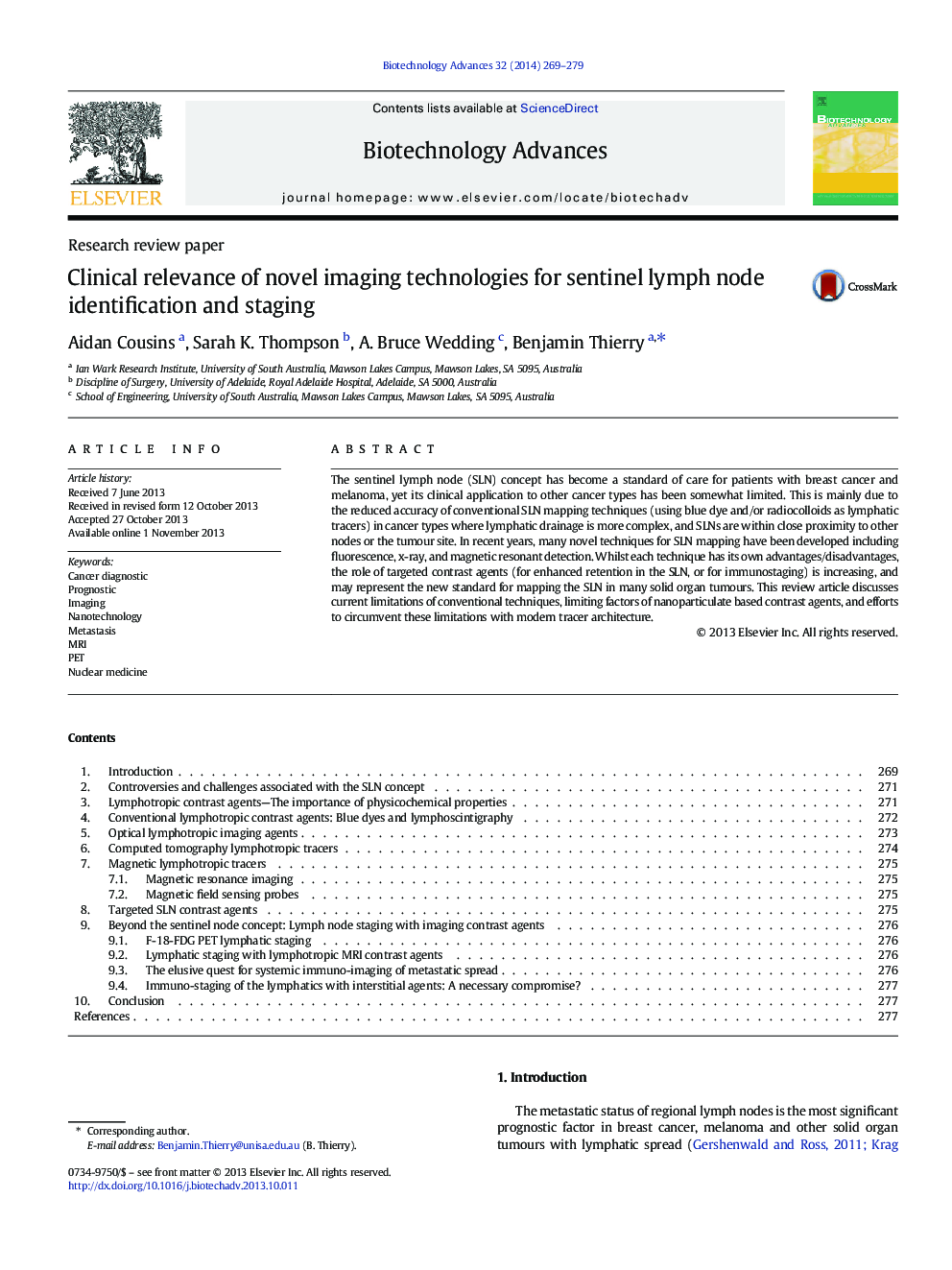| Article ID | Journal | Published Year | Pages | File Type |
|---|---|---|---|---|
| 10231606 | Biotechnology Advances | 2014 | 11 Pages |
Abstract
The sentinel lymph node (SLN) concept has become a standard of care for patients with breast cancer and melanoma, yet its clinical application to other cancer types has been somewhat limited. This is mainly due to the reduced accuracy of conventional SLN mapping techniques (using blue dye and/or radiocolloids as lymphatic tracers) in cancer types where lymphatic drainage is more complex, and SLNs are within close proximity to other nodes or the tumour site. In recent years, many novel techniques for SLN mapping have been developed including fluorescence, x-ray, and magnetic resonant detection. Whilst each technique has its own advantages/disadvantages, the role of targeted contrast agents (for enhanced retention in the SLN, or for immunostaging) is increasing, and may represent the new standard for mapping the SLN in many solid organ tumours. This review article discusses current limitations of conventional techniques, limiting factors of nanoparticulate based contrast agents, and efforts to circumvent these limitations with modern tracer architecture.
Related Topics
Physical Sciences and Engineering
Chemical Engineering
Bioengineering
Authors
Aidan Cousins, Sarah K. Thompson, A. Bruce Wedding, Benjamin Thierry,
